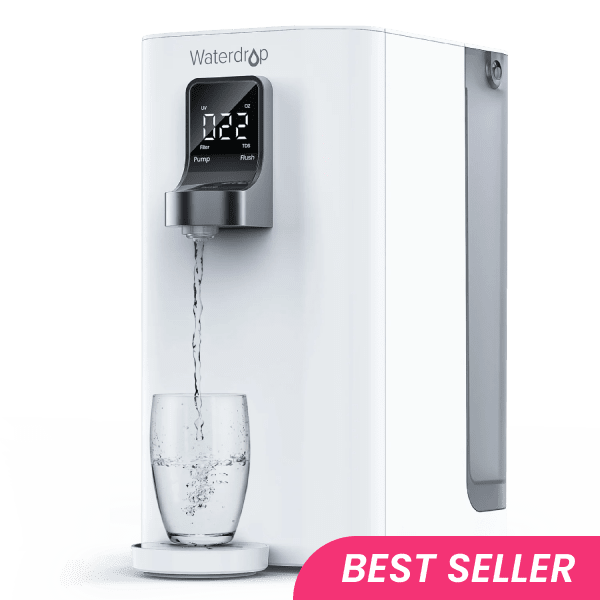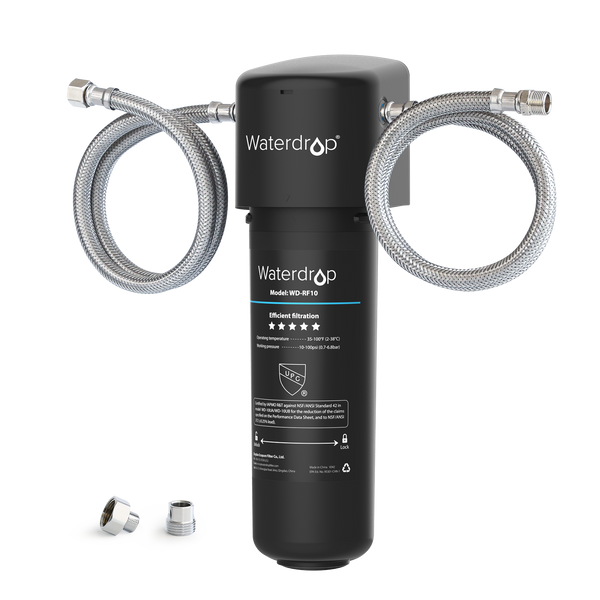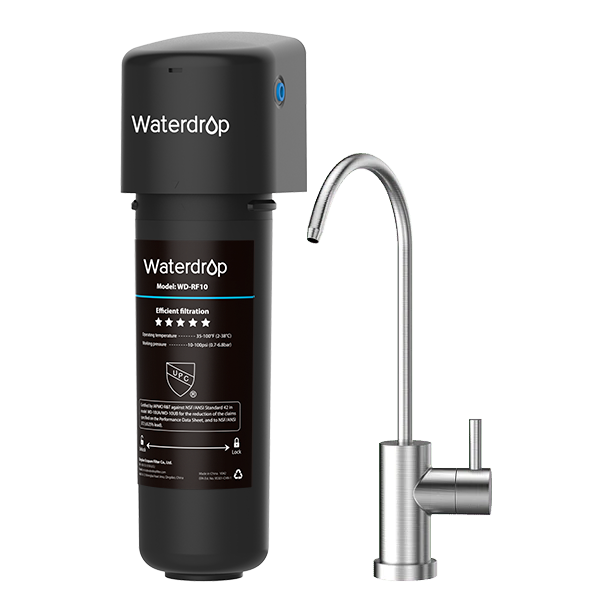Can I Connect the RO with a Water Softener?
by Dr. Jonathan Doyle - Updated May 06, 2021
Some customers who already own a water softener at home often come up with a
question: If I already have a water softener, can I also use an RO system?
A short answer is, if you want to additionally remove the other contaminants that a
water softener doesn’t remove, then yes. But if you want to remove the salty taste of the softened water, we
would not recommend an RO system.
If you want to know why, keep reading this article to discover the reason.
What Is Water Softener?
A water softener is one of the most effective household water filtration systems
designed to remove “hardness ions” - mainly calcium and magnesium minerals, leaving you with cleaner and fresher
water.
There are mainly two types of water softener. Although both types will reduce the
hardness ions in your water to leave you with beneficial softened water, they do this differently.
Salt based (ion- exchange) water softener
Salt based water softener turns “hard” water into “soft” by means of ion-exchange.
Ion exchange is a reversible chemical reaction where dissolved ions are removed and
replaced with other ions of the same or similar electrical charge. Salt-based water softened required to refill
salt periodically, exchanging the “hardness ions” like calcium and magnesium ions in the water with sodium or
potassium ions to make the water “soft”. That is why the water from the salt based water softener would taste
salty.
Salt-free water softener (water conditioner)
Salt-free water softeners (water conditioners) are alternatives to the ion-exchange
models. They use a softening process called Template Assisted Crystallization (TAC) instead of ion exchange to
convert the hard minerals in the water into crystals. Despite this difference, salt-free water conditioners are
classified as water softeners because they also reduce the effects of hard water and produce soft water.
These water softeners do not require any salt, maintenance, or electricity, making
them much easier to manage than traditional salt-based water softening systems.
What Is Reverse Osmosis System?
Reverse osmosis water filtration systems adopt innovative RO membranes with a
0.0001-micron pore size, which is 100,000 times smaller than the diameter of a human hair. Thanks to the tiny
pore size of the RO membrane, the RO water filtration system can effectively remove various impurities in water,
including sodium, chromium, chloride, copper, lead, arsenic, pesticide, fluoride, radium, sulfate, calcium,
magnesium, potassium, nitrate, and phosphorous, among others.
The RO system distinguishes itself from other water purification systems with an RO
membrane, which can remove bacteria and viruses in water. However, as water has to pass through the multi-stage
filter media, the flow rate might be slightly impacted, resulting in a slower flow rate than the water softener.
What’s the Difference Between Water Softener and Reverse Osmosis System?
Generally speaking, water softeners usually serve as a whole house filtration
system, installed at the point of entry and soften water for the whole house. However, RO systems are usually
installed at the point of use like under a sink, and only provide purified water for drinking and cooking via a
separate tap.
Reverse osmosis (RO) systems can eliminate almost all contaminants in water, but
water softeners just reduce hardness ions like calcium and magnesium in your water to provide a better taste.
Can I Connect My Water Softener with a Reverse Osmosis System to Remove Other Contaminants?
Yes, if you worry about the other contaminants still present in your softened
water, it’s advisable to install an RO water purifier additionally, which helps to remove various other harmful
substances that water softener cannot remove, such as heavy metals, pesticides, VOCs, etc.
Can I Connect My Salt-Based Water Softener with an RO System to Remove Sodium?
However, if you are bothering with the salty taste of the softened water, we do not
suggest you remove the taste with an RO System. This is because when water passes through, the water softener
increases the salt concentration, making it much saltier than the source water. Although the RO water purifier
has removed up to 90% of the sodium from the softened water, you will still taste the salt.
Thus, it is not advisable to connect an RO to remove the sodium.
Contaminants Detected in Fruitland Water Special Service District
30
Contaminants
EXCEED EWG HEALTH GUIDELINES
EXCEED EWG HEALTH GUIDELINES
30 Total Contaminants in Your Water
Water Provider
Fruitland Water Special Service DistrictPopulation Affected
120,000Water Source
Ground waterExceeds Guidelines
Others Detected















